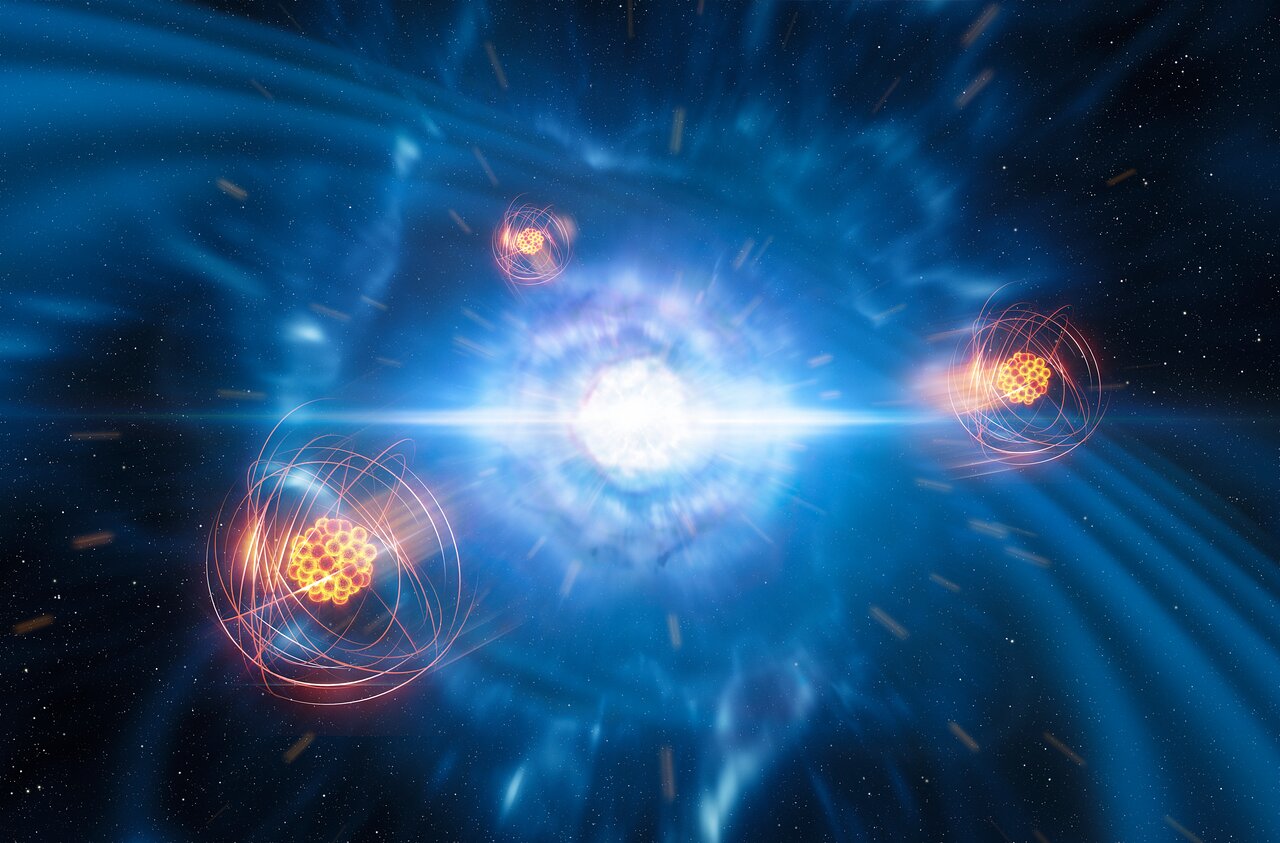
When massive neutron stars collide, they don’t only produce dazzling light, bursts of gamma rays, and magnetic fields trillions of times stronger than the field on Earth. Scientists from the European Southern Observatory (ESO) have found that they can also create heavy elements like strontium, finally answering a long-standing puzzle about the origin of certain elements found on Earth.
Strontium is found naturally in a few places on our planet, mostly within soil or concentrated in minerals like celestine and strontianite. Its best known use, however, is something rather less scientific: It is used in fireworks to give a deep, rich red color.
Since the 1950s, scientists have been working out how and where different elements were originally formed. They knew that many elements were created in cosmic events like supernovae, but before now they didn’t have confirmation of how the heavier elements were created.
“This is the final stage of a decades-long chase to pin down the origin of the elements,” lead author Darach Watson of the University of Copenhagen said in a statement. “We know now that the processes that created the elements happened mostly in ordinary stars, in supernova explosions, or in the outer layers of old stars. But, until now, we did not know the location of the final, undiscovered process, known as rapid neutron capture, that created the heavier elements in the periodic table.”
It was data from a neutron star merger observed in 2017 that led them to this discovery. “By reanalyzing the 2017 data from the merger, we have now identified the signature of one heavy element in this fireball, strontium, proving that the collision of neutron stars creates this element in the universe,” Watson said.
The data was collected using the ESO’s Very Large Telescope in Chile, which trained its X-shooter instrument on the site of two neutron stars colliding. The X-shooter is an intermediate resolution spectroscopy device, allowing imaging across a wide range of wavelengths from ultraviolet to infrared. This range of wavelengths meant scientists could see the aftereffects of the merger, called a kilonova, and could see the likely presence of heavier elements.
The process through which the strontium is created, rapid neutron capture, requires conditions even hotter than within the core of a star. It can only happen in the presence of free neutrons and very high temperatures, such as in a neutron star merger.
According to another scientist involved in the study, Camilla Juul Hansen from the Max Planck Institute for Astronomy in Heidelberg, Germany, this tells us not only about the origin of elements, but also more about neutron stars themselves. “This is the first time that we can directly associate newly created material formed via neutron capture with a neutron star merger, confirming that neutron stars are made of neutrons and tying the long-debated rapid neutron capture process to such mergers.”



